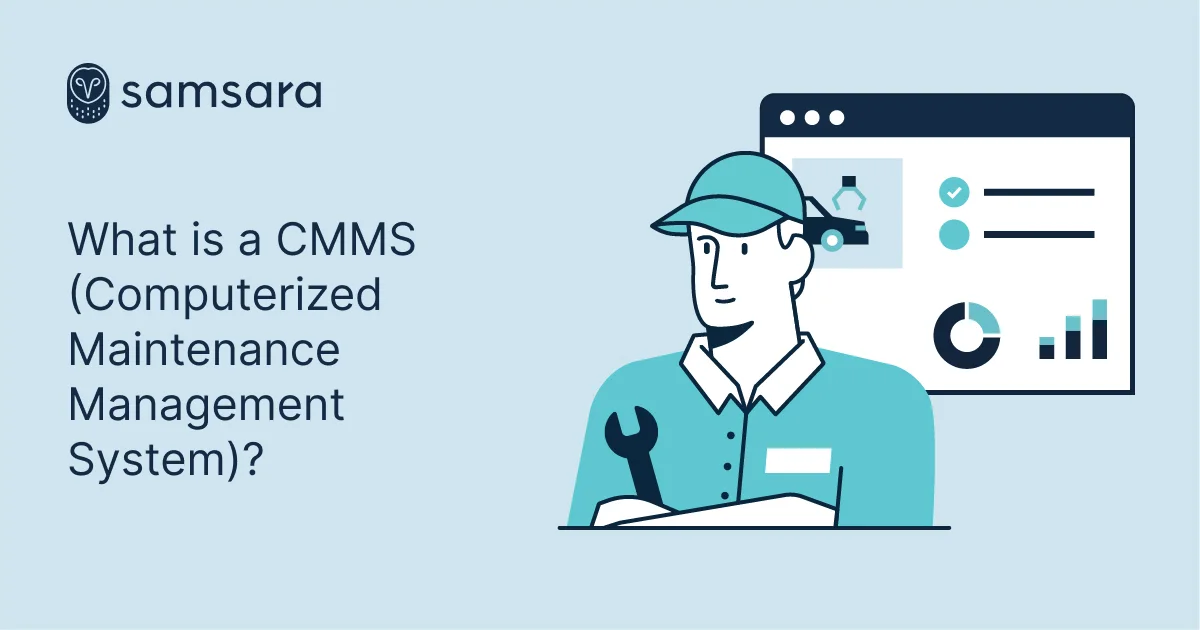What is a Computerized Maintenance Management System (CMMS)?
October 22, 2021

Get Started With Samsara
Check Our PricesKey Takeaways
Maintenance teams use computerized maintenance management systems (CMMS) to record their asset data, plan maintenance activities, and for work order management. CMMS systems help organizations use their physical equipment — such as equipment, machinery and other assets — more effectively. Learn more about what CMMS software does.
What is a computerized maintenance management system (CMMS)?
A computerized maintenance management system (CMMS) is software that stores maintenance information and facilitates maintenance operations. CMMS systems help organizations use their physical equipment — such as equipment, machinery and other assets — more effectively. It consolidates maintenance tasks in one place. For example, tracking asset lifecycle or spare parts inventory. CMMS is also referred to as maintenance management software.
What does CMMS software do?
Maintenance teams generally use CMMS to record their asset data, plan maintenance activities, and work order management. Because CMMS has wide functionality, many maintenance teams can use it as a standalone solution. However, if they have specialized needs or equipment, they may choose enterprise asset management (EAM) or facilities management software (FM) instead.
The main components of CMMS include (but are not limited to):
Work order management. Organizing and storing work orders digitally is much more efficient today than using a paper-based system. As they’re all stored in a single, searchable database, companies can easily track work order progress from any desktop or mobile device.
Plan preventive maintenance. No one wants to experience unexpected equipment downtime. With the help of CMMS, businesses can schedule preventive maintenance tasks before equipment breaks down.
Asset monitoring. CMMS tracks important asset information like purchase dates, warranty information, asset maintenance history, and lifespan. This data helps companies make informed decisions, predicting when service issues may arise.
Manage labor. Businesses can use a CMMS solution to manage the schedules of maintenance professionals. Maintenance managers can automate scheduling and assign specific tasks to specific workers.
Track inventory. While CMMS is not a substitute for a true inventory management system, maintenance workers can still use it to track inventory. For example, CMMS can track the location and inventory of spare parts in a warehouse, allowing organizations to integrate that data with work requests.
Maintain regulatory compliance. CMMS data helps organizations maintain compliance by storing information on all maintenance work, provides audit trails, and can generate reports showing proof of maintenance activities.
When these components are combined, businesses can set up robust maintenance programs, complete with time-saving automations and workflows. This helps organizations cut down maintenance costs and vehicle downtime while maximizing uptime and asset performance.
On-premise vs. cloud-based CMMS
Before the rise of software-as-a-service (SaaS) products, businesses used on-premise CMMS for their maintenance needs. On-premise software solutions were purchased upfront, and installed by IT teams. Businesses were responsible for all maintenance and infrastructure.
Today, many businesses are implementing cloud-based CMMS software, which the CMMS provider manages. Software gets updated automatically, and new features never have to get installed by IT.
Cloud-based CMMS operates easily on multiple platforms, including tablets and smartphones, via mobile app. Technicians can update real-time maintenance data from anywhere, helping to streamline maintenance processes.